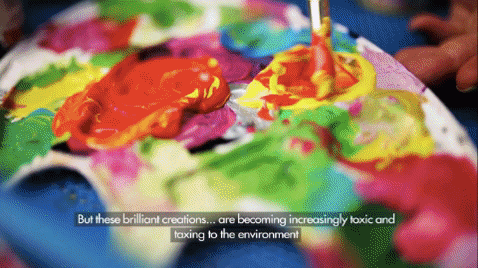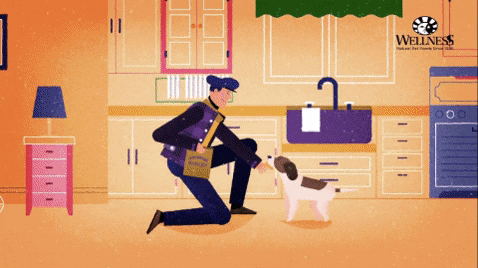Locked indoors, pushed online
COVID-19 has locked down almost a third of the world, forcing everyone online. For traditional brick-and-mortar shops, events companies and airlines, these have not been easy times. But it’s not all doom and gloom.
For instance, remote team management tools like Slack and Zoom have been turning a neat profit with the widespread implementation of work from home policies.
According to financial magazine Barron’s, the shares prices of video conferencing giant Zoom were up 22% on Monday at a time when the Dow Jones Industrial Index (DJIA) was down 4%.
Similarly, analysts think that Netflix has everything to gain from this pandemic. As options for outdoor entertainment dwindle and people elect to stay home, subscriptions for the popular streaming service are expected to exceed expectations significantly.
There’s a pattern here, and it looks a lot like a series of 1’s and 0’s.
Going digital might just be the answer to surviving this crisis.
Wake up call for companies
Company spending has nosedived across the board. We’re talking headcount reduction, the implementation of no-pay leave, temporary pay cuts, the whole nine yards. But if there’s one thing that we strongly believe in, it’s this: If you take one step forward when your companies are taking one step back, you’ll wind up two steps ahead.
It’s bold to contemplate increasing budgets at a time when your bottom line is in the red – but cutting costs isn’t going to generate revenue.
On the other hand, reaching out to potential clients online might help with that.
According to Scott Jones, CEO of digital marketing agency 123 Internet Group, his company has “seen a real spike during the last few weeks from companies wishing to create or update websites, launch new e-commerce channels and create social media campaigns focused on home-workers”.
While there’s been a gradual shift away from traditional advertising over the past few years – think billboards, theatres and television, COVID-19 has accelerated the digital exodus significantly. In years to come, a business’ fortunes will become increasingly intertwined with its digital presence.
And now that there are more eyeballs online than ever before thanks to COVID-19, it might not be a bad idea to start investing in growing your brand digitally.
We’ve scoured the web to find some case studies showing how you can make the best of this situation – read on for more.
Adapting and animating
In times like these, it’s best to adopt a slightly more agile approach to marketing. We’re referring to a willingness to adapt both the message and the form.
Take, for instance, Ford’s coronavirus-response campaign.
In an article on Ad Age, Editor Ed Schultz describes how Ford scrapped their ad plans focusing on their vehicles and chose instead to highlight the steps they were taking to help consumers finance their cars in these trying times. The team knew that reassuring their customers was going to work a lot better than trying to sell more cars and altered their messaging accordingly.
And that’s not all. Traditionally, most car commercials are either a result of a week-long shoot with a massive production team or computer graphics rendered in high fidelity. With the implementation of Ford’s work-from-home policy, it became nigh-impossible to throw a shoot together. And as gorgeous as CG renders can be, good work (like this) takes time.
 Here’s a teaser of a video we produced for Disney’s Black Panther Lexus LC 500.
Here’s a teaser of a video we produced for Disney’s Black Panther Lexus LC 500.
Ford had an elegant solution to this problem. Working within the constraints of time, the team at Ford chose to make use of historical footage, emphasizing its 100 year history in the US. On top of that, they also chose to make heavy use of text and sound – things that can be quickly generated on the fly, to keep costs reasonable.
If you’d like to push on your outreach efforts with a video but have neither the time, nor the budget to film something entirely from scratch, perhaps consider taking a leaf from Ford’s book.
With ample historical footage, a good video editor can help cut images together to tell a story. And don’t think that you’ll need lots of photos and videos. We can always plug the gaps with carefully selected stock. The icing on the cake is the fact that all of this can be done remotely – from conceptualization to the final product.
Here are some of our pieces; they might give you a little inspiration.
In this video we used a combination of 2D animation and stock footage to feature Megapro (Matex’s range of efficient high-quality dye technologies).

Don’t have enough footage from the past? Don’t worry. We’ve done whole videos with only stock assets. Here’s something we produced for Singapore’s National Day Parade in 2019.

And if you would like to move away from traditional footage, why not consider animated explainers? Like adapted footage, these videos won’t require you to carry out an actual shoot. In fact, you need only provide your creative studio with your messaging and let them take care of the rest.
Here are some styles to consider.
Just last year, SUSS, in collaboration with The Straits Times, conducted a study to examine the characteristics of 19-year-olds (the last cohort of the Millennials) to gain deeper insight into their mindsets and world-views.
We did a 2D animation video filled with bold, vibrant graphics which managed to depict the data from the survey in an eye-catching and appealing way.

Last but not least, take a look at a 2D animation we produced for WellPet, a premium natural pet food brand. This video captures the essence of WellPet’s brand and product story.

Pieces like these demonstrate how animated videos are just as, if not better, at eliciting emotion as live action videos.
Tired of reality? Dive into augmented/virtual reality
For some businesses, beautifully-rendered videos, well-written copy and high-resolution stills aren’t enough to sell. I’m talking about furniture retailers. A sofa, while not as expensive as, say, a car, isn’t something that you would want to casually purchase without doing your due diligence. You’d probably also want to try it out or see how it looks as part of your apartment before deciding to buy it.
While the former is impossible to accomplish without heading down to the showroom, you might be able to do the latter with a little help from augmented reality/virtual reality.
While augmented reality allows users to experience an enhanced version of their real-world environment by superimposing computer-generated artifacts (think sounds, images and text) on their physical surroundings, virtual reality uses computer technology to create a completely new simulated environment (which can be similar to or wholly different from the real world).
Essentially, both AR and VR make it possible for users to experience products and spaces without having to be physically present – this is especially important now that many people are choosing to stay indoors. Let’s take a look at the numbers.
According to an article on The Drum (a global media platform that shares the latest news for marketing and media industries) , “a 2016 study from retail marketing business Interactions found that 40% of people would pay more for a product if they could experience it through AR, while a further 72% said they had bought items they hadn’t planned to because of AR.“
One specific retailer we know has implemented AR to great effect. Let’s take a closer look at IKEA.
Martin Coppola, the first chief digital officer of the Dutch multinational group which launched its own AR app (IKEA Place) in 2017, said that “IKEA has seen that people [using] its AR features are “influenced greatly” which converts into sales”.
 Screenshots from the IKEA Place app. Photo taken from IKEA.
Screenshots from the IKEA Place app. Photo taken from IKEA.
IKEA Place gives users an idea of how an IKEA product would look like in their homes by superimposing a piece of furniture over a real-time image of their living space. Users simply hold up their phones, select an IKEA product from IKEA’s vast catalogue and place their furniture wherever they want.
The app is also able to scale the products to the dimensions of the space it’s placed in. This allows users to determine if the furniture will fit in their surroundings.
That’s not all. IKEA Place also comes with visual search technology so users can use the app to identify IKEA furniture they like. All they have to do is hold up their phones to the product that has caught their eye and the app will pull it up in the catalogue. There’s even an option that allows users to save these searches in a “favourites” list so they can revisit it whenever they’re ready to make a purchase.
Although it isn’t clear exactly how much AR has contributed to IKEA’s online sales conversion, as of 2020, “around 5% of Ikea’s €38bn global sales are currently online…and Martin Coppola hopes the global figure will “double” by the same time next year.”
Sounds pretty decent, eh?
Adopt new ways of staying productive
Working from home is an imperfect solution. Some equipment just can’t be brought home from the office and some documents are better left in a secure location. What this means is that there are some professionals who just can’t perform their tasks from their apartments.
But this doesn’t mean your organisation can’t remain productive. Consider, perhaps, helping your employees to continue upgrading their skills in these difficult times?
Online videos and learning platforms can be quite useful here. An interactive training video can help your employees stay abreast of industry developments, ensuring that your team comes out of the downturn stronger and more competitive when the economy eventually picks up again.
For example, we produced an interactive video for MOE to educate primary school children about museum etiquette.

If you’re looking for interactive training videos for a corporate audience, here’s a good example from Trend Micro Incorporated. The multinational cyber security and defense company released an educational simulation ‘Targeted Attack: The Game’, that allows players to make decisions as the Chief Information Officer of a fictional company. The aim of the game is to give players an idea of the security challenges businesses often face.
And this rounds up our article. We hope these case studies have been helpful.
The time is NOW
The COVID-19 pandemic has not been kind to businesses. The creative industry is no exception. The good news is, the general downturn means creative studios are probably not as packed as they normally are and would probably be able to meet tighter deadlines than before.
Why not take advantage of this fact to produce engaging content now (and maybe even for future campaigns) at lower-than-usual rates so you’ll be ready to recover from this crisis before your competitors do?
Don’t know where to start? Let us help you! We’d be happy to offer our support in this time of crisis.





